The main radio channel is even cheaper
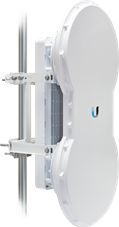


The commercial installations of AirFiber 5 / 5U did not have time to begin, as the first Ubiquiti solutions of the AC standard, announced as “450 Mbps TDD”, became available. If the capabilities of the conventional AirMAX line are known, then the new line is still little studied. The question arises - is it possible to build highways on the new Rocket AC, or is it still better to have airFiber 5 / 5U? Or maybe Cambium PTP650 is better?
Let's take a closer look at the Rocket AC lite, the cheapest trunk solution in the 5 GHz band.
The new AirMAX AC line from Ubiquiti is so far represented by only two solutions:
- PowerBeam AC with integrated antenna;
- Rocket AC lite with familiar RP-SMA connectors.
Devices are not yet compatible with the usual line of AirMAX, they work only in the point-to-point mode.
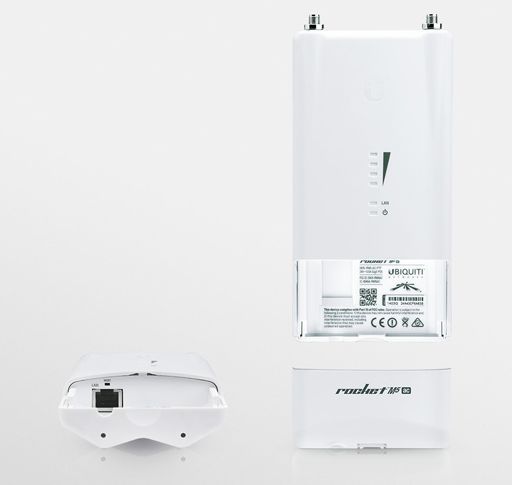
Physically, the new Rocket AC resembles the standard Rocket:
- A pair of antenna outputs;
- Gigabit port, but power - 24 V;
- There is no GPS sync.
')
It is recommended to use a new 31 dB parabolic antenna with a visor and a cap:

For medium range, a PowerBeam AC solution with a 27 dB antenna, but less than that of a Rocket AC, is proposed:

The main parameters of the mainstream solutions Ubiquiti 5 GHz
| MHz frequency ratings | 5150-5845 | 5470-5950 / 5725-6200 | 5150-5875 |
| Channel capacity, max (duplex *) | 90 | 500 | 300 |
| Frequency Bands, MHz / Technology | 5,10,20,30,40 (TDD) | 10.20.30.40.40 (TDD / FDD) | 10.20,30,40,50,60,80 (TDD) |
| Available Modes | PTP / PMP | PTP | PTP |
| Antennas | External 30-34 dB; built-in 8-25 dB | Built-in 23 dB | External 31 dB; built-in 27 dB |
| Power, dBm (16/64 / 256QAM) | 27/24 / no | 24/22/20 | 27/27/23 and 22/22/18 acc. |
| Sensitivity, dBm (16/64/256 QAM) | -87 / -79 / no | -78 / -71 / -64 | -90 / -83 / -69 |
* for TDD systems, the speed is recalculated for symmetrical traffic
From the point of view of the basic parameters, the firstborn of the AC family looks more interesting than the AirMAX ruler: although the capacity and inferior airFiber — but they are many times cheaper! A channel on a Rocket AC with 31 dB antennas will cost about $ 1000-1100 , while a span on Airfiber will cost $ 2,300. Actual prices you can look at CompTek.ru , and we will continue to disassemble the technique.
Equipment functionality
In terms of functionality, the device repeats the classic line: bridge / router / NAT, VLAN support, traffic filtering.
The main differences:
- No built-in spectrum analyzer (scheduled to be added) ;
- There is no traffic restriction on vlan-interfaces;
- There is no function of the test application of the configuration (scheduled to be added)
- It is impossible to limit the maximum channel speed, and the set speed is not displayed in MCS, but more roughly, in conditional speeds;
- The mode of compatibility with Wi-Fi is not provided.
An important difference from the classic line are the available frequencies.
In the European version, at best, you can focus on the working ranges of the ether 5150-5845 MHz. It should be noted that there is no software for the AC line with the Compliance test region. Thus, it is not necessary to count on receiving non-standard frequencies.
Testing equipment
For the AirMAX line, we noted rather poor performance with small packets — let's see how the situation changed in Rocket AC:
Mbit / s duplex capacity:

Performance in the 40 MHz band, frames of various types:
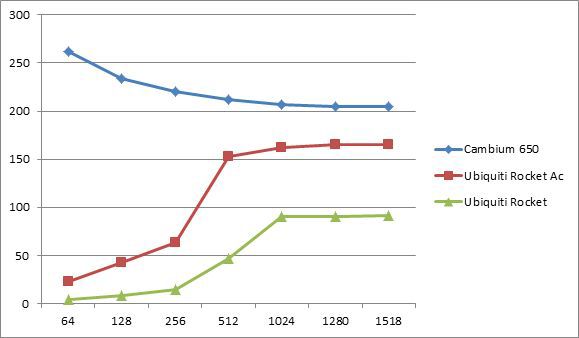
(abscissa axis - packet size in bytes, ordinate axis - throughput in Mb / s of duplex)
The situation has improved significantly, and although the performance of 700 thousand packages (airFiber) is still unattainable, the system has approached the equipment of the carrier class.
System sensitivity
We measure the real sensitivity of the system, that is, the level of the signal at which the system holds the modulation.
| Model families | Cambium | Cambium real | AirFiber 5 | AirFiber 5 real | Airmax | AirMAX real | AirMAX AC | AirMAX AC real |
|---|---|---|---|---|---|---|---|---|
| QAM16, dBm | -69 | -68,5 | -78 | -73 | -84 | -76,5 | -90 | -78 |
| QAM64, dBm | -64 | -64,5 | -71 | -68 | -75 | -62,5 | -83 | -68 |
| QAM256, dBm | -62 | -57,5 | -64 | -62 | - | - | -69 | -52 |
It should be noted that the AirFiber measurements were made on the channel, not on attenuators, so external interference could have affected the modulation of the QAM16.
Modulation sensitivity graphs:
QAM 16 modulation, sensitivity module:

QAM 64 modulation, sensitivity modulus:

QAM 256 modulation, sensitivity module:


QAM 64 modulation, sensitivity modulus:

QAM 256 modulation, sensitivity module:

Findings:
Sensitivity is better than AirMAX, albeit lower than Cambium's higher modulation solution.
It was again confirmed that comparing the sensitivity parameters of equipment of different classes without practical tests is undesirable.
Solutions on specialized chipsets with less passport sensitivity in practice work at a signal level comparable to the 802.11 level.
Knowing the sensitivity, we can calculate the range of links on the classic equipment AirMAX, AC and airFiber, to determine the scope of each of the systems.
Maximum achievable capacity
In general, it is problematic to register in the Russian Federation the use of frequencies in the band of more than 40 MHz, so consider the TDD variants in 40 and 20 MHz bands:
Capacity (Mbps) in the 40 MHz band, depending on the distance (km):

Capacity (Mbps) in the 20 MHz band, depending on the distance (km):

It can be seen that with a limited range of AirFiber there is not enough antenna gain, the variant with antenna outputs would be interesting.
Conclusion
- The performance of the new solution is significantly superior to AirMAX, although inferior to AirFiber;
- Bit efficiency is significantly higher than AirMAX, but lower than AirFiber;
- The package performance of the equipment is close to the performance of the carrier-grade equipment and allows you to work in the 20 MHz band for any traffic profile;
- At the moment, the software is in beta status, respectively, the functionality of the system will be expanded, and its implementation on channels under load still requires special care;
- The frequency range of the solution is essentially a classic line, the range above 5875 is not supported (here we can recommend AirFiber 5u);
- Taking into account the measurements, it seems doubtful whether the use of QAM256 modulation in PtMP mode;
- For QAM64 modulation, there is a significant improvement in sensitivity with respect to AirMAX.
And some pictures of the new interface Ubiquiti
Region selection

Main menu

Radio settings

Network level settings
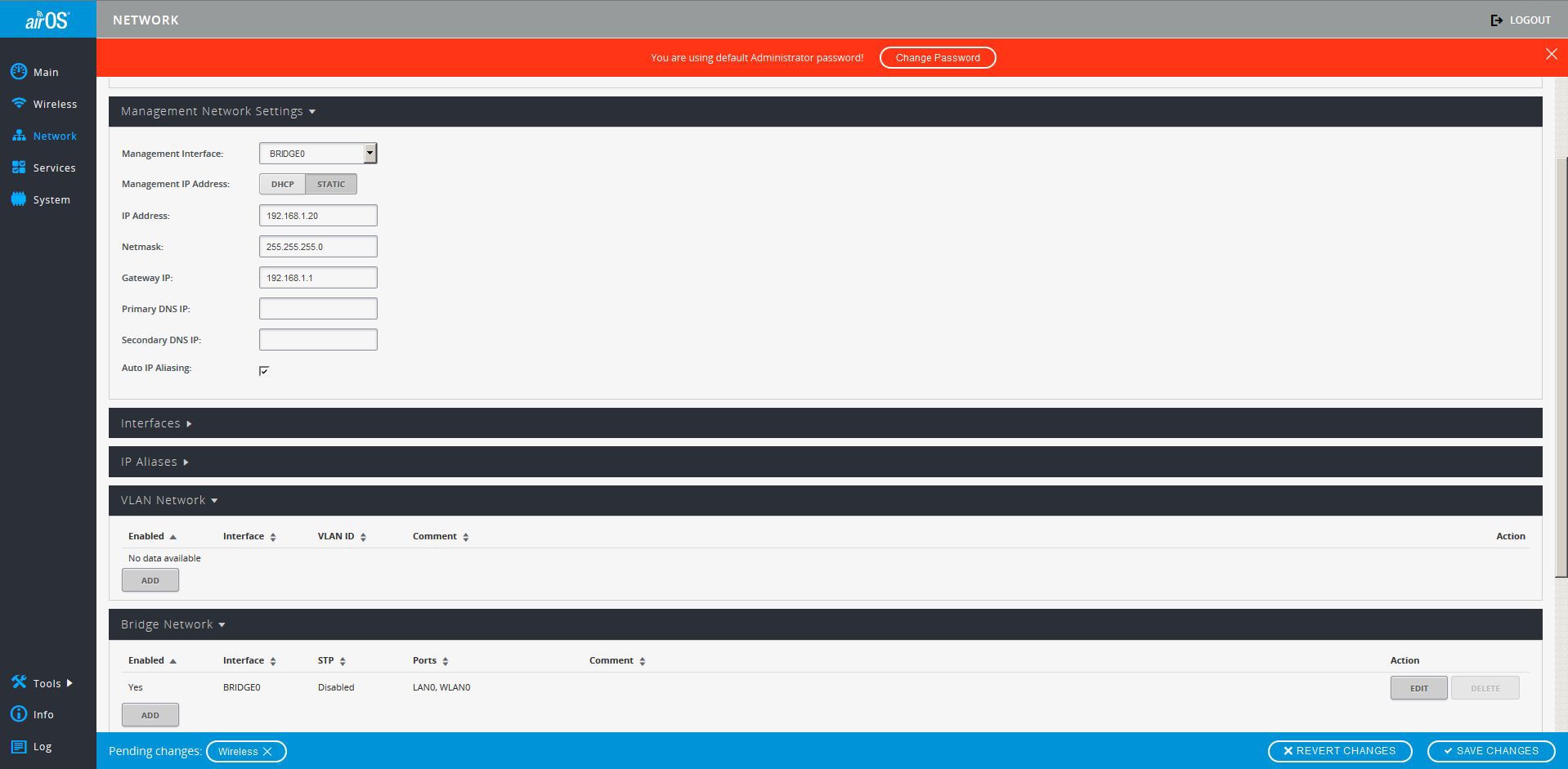
Services and Services
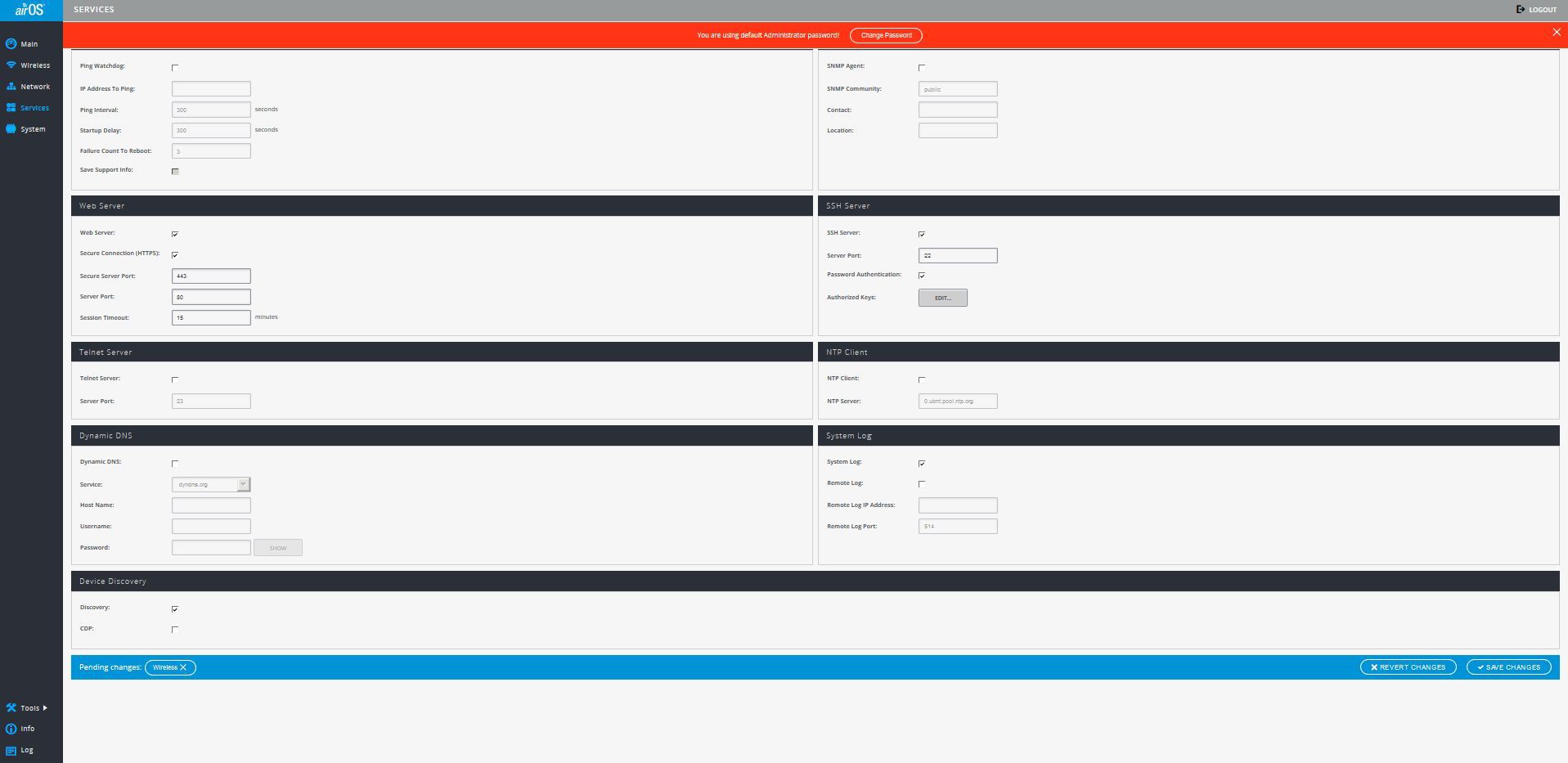
Connection established
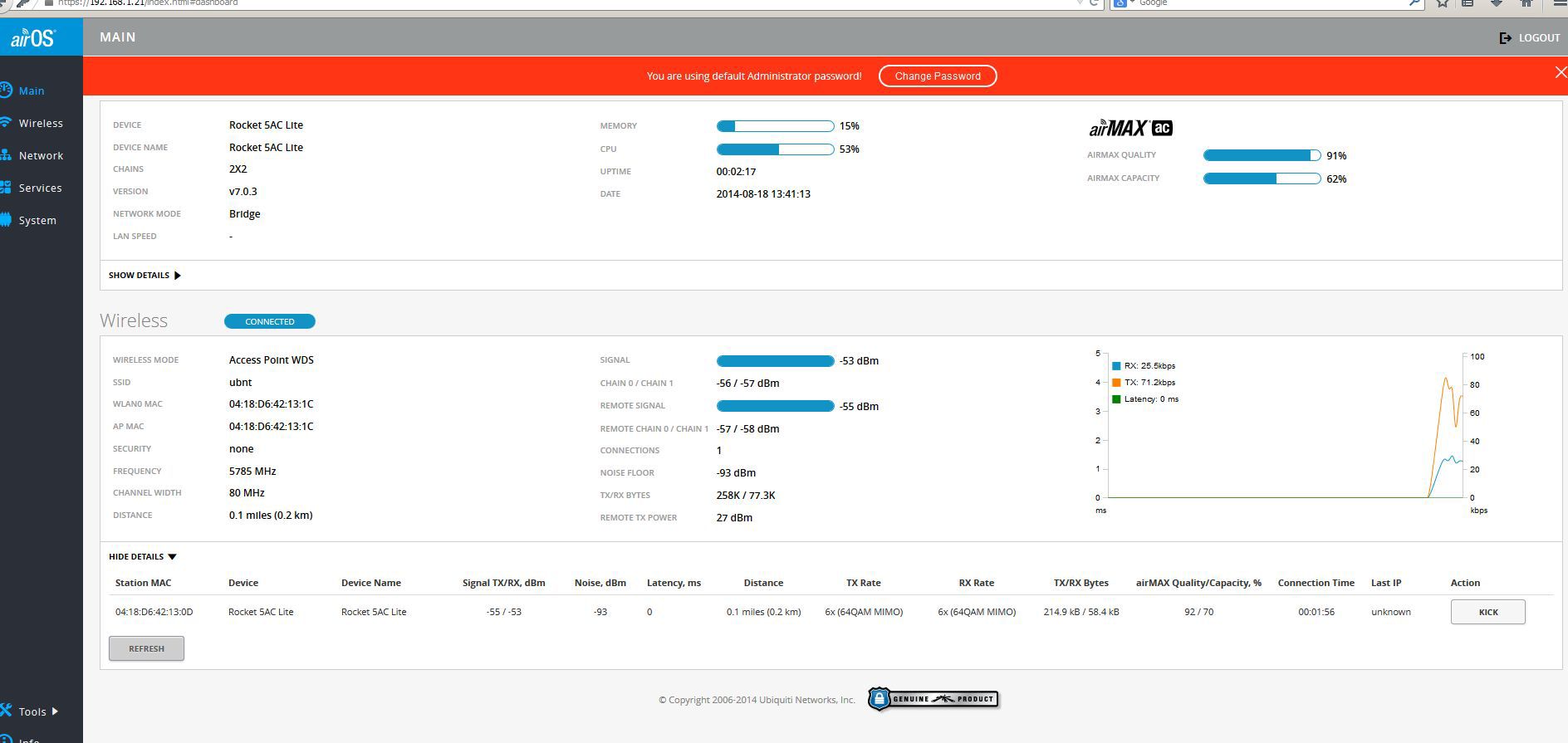
Connection properties, modulation increases
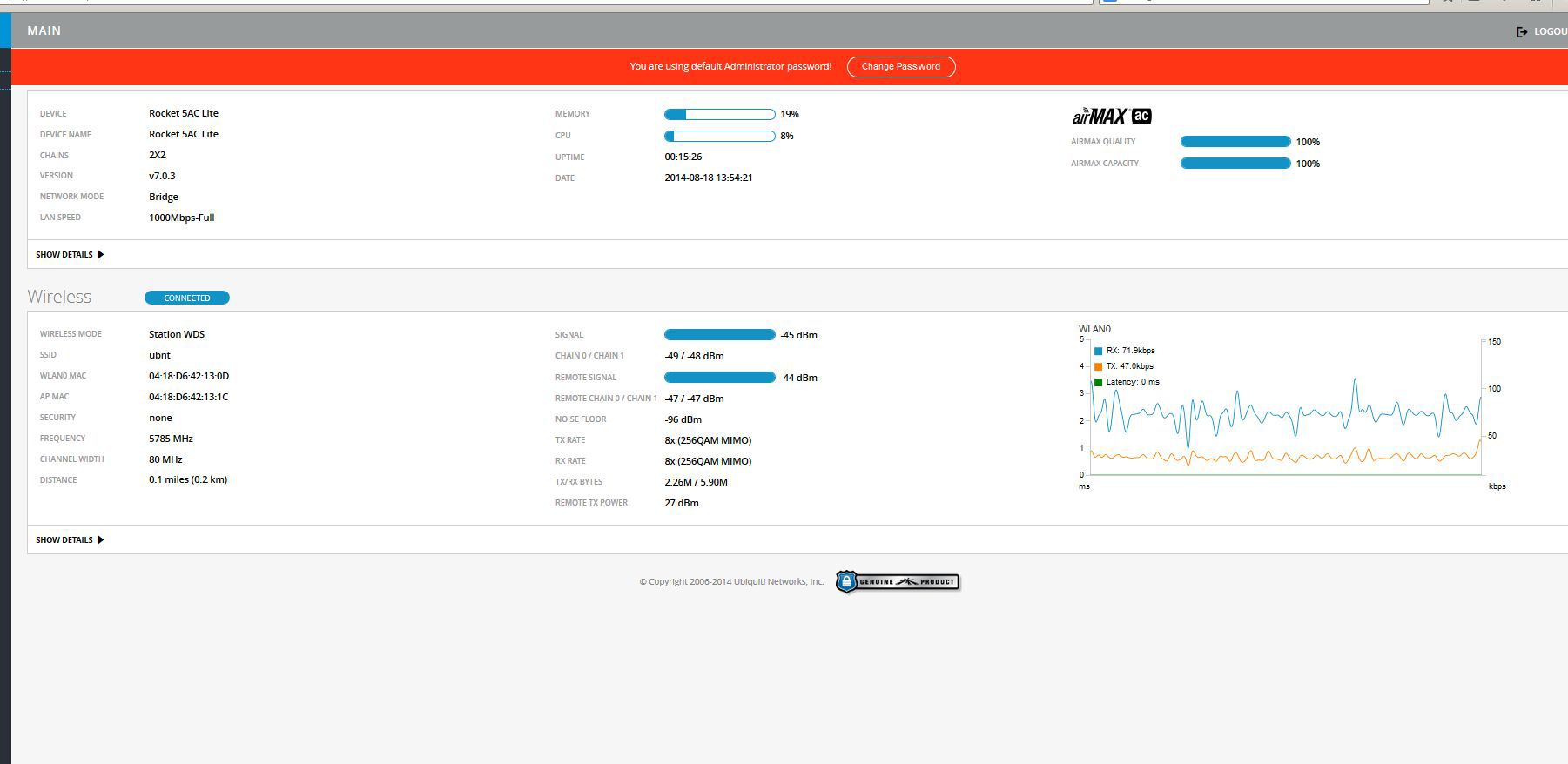

Main menu

Radio settings

Network level settings

Services and Services

Connection established

Connection properties, modulation increases

Photos of the filling system:
Overall plan

Screens removed
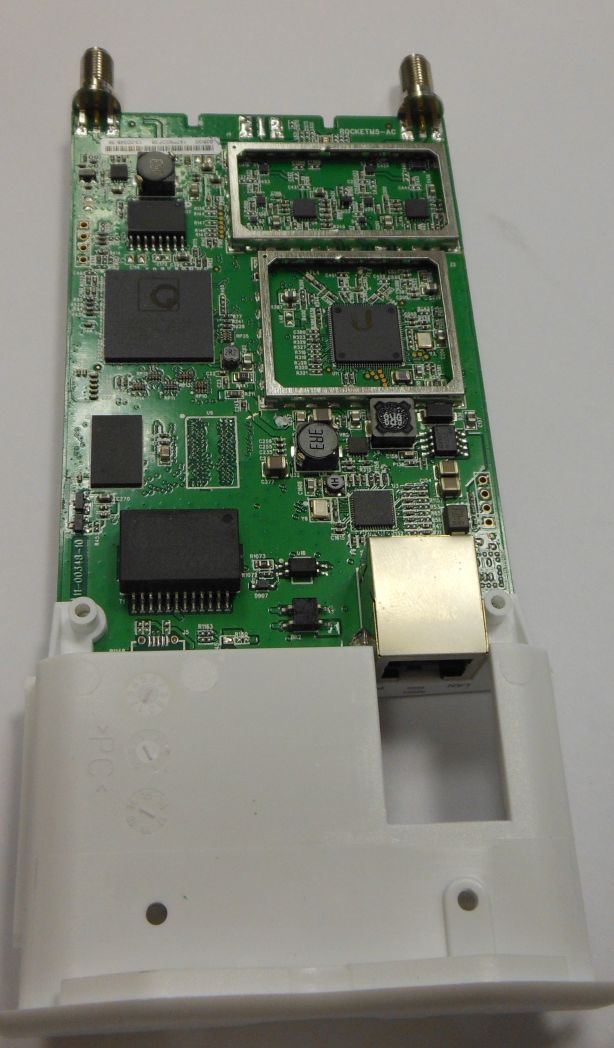
Radio path and signal processing chip
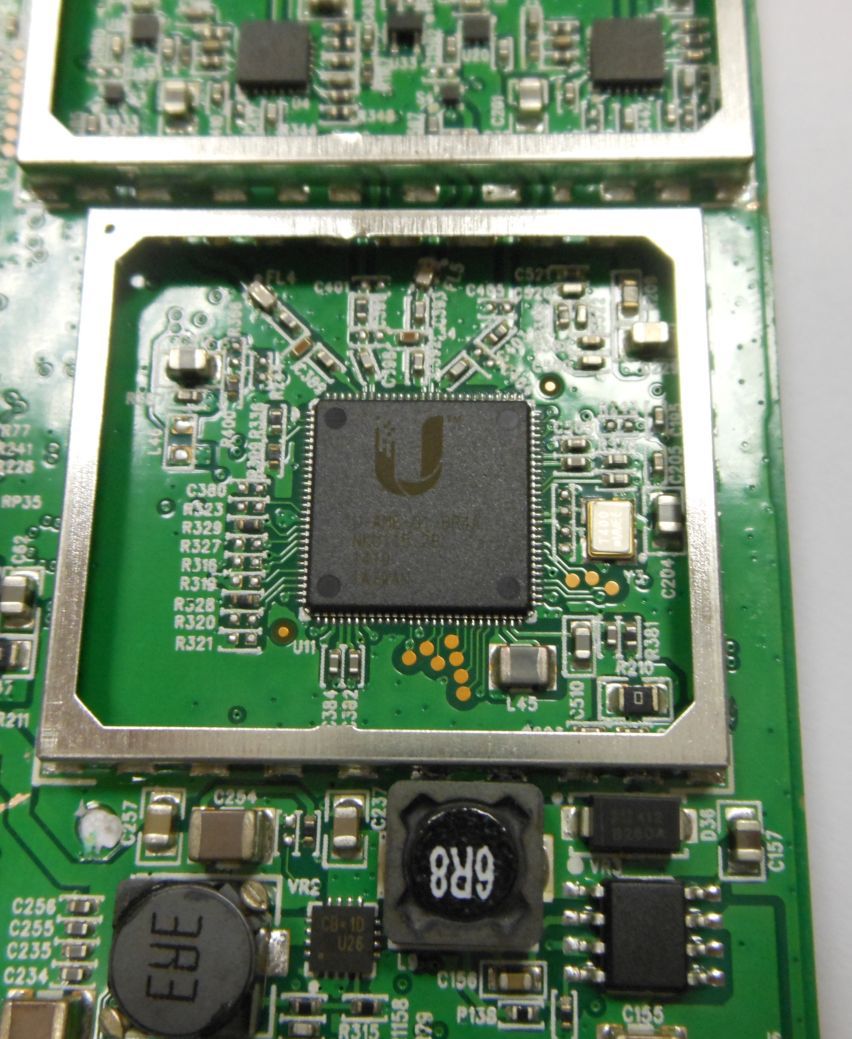
General Purpose CPU, RAM
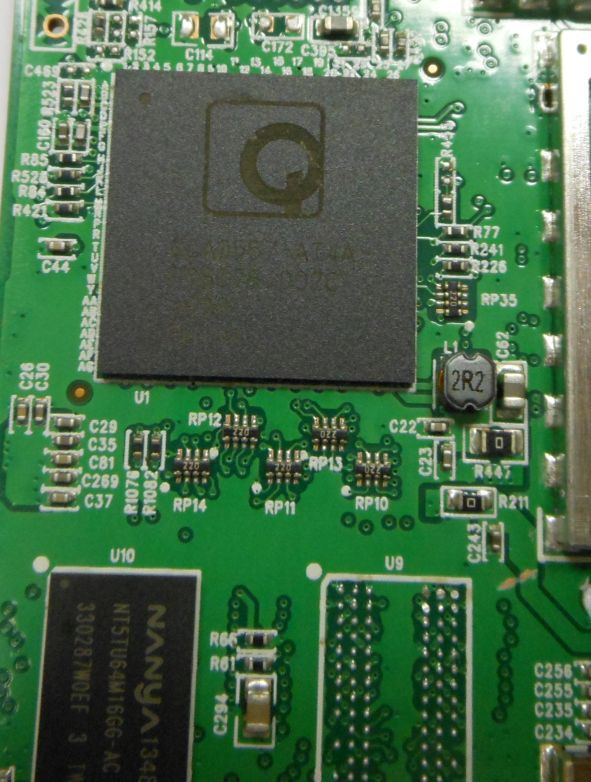
Ethernet chip
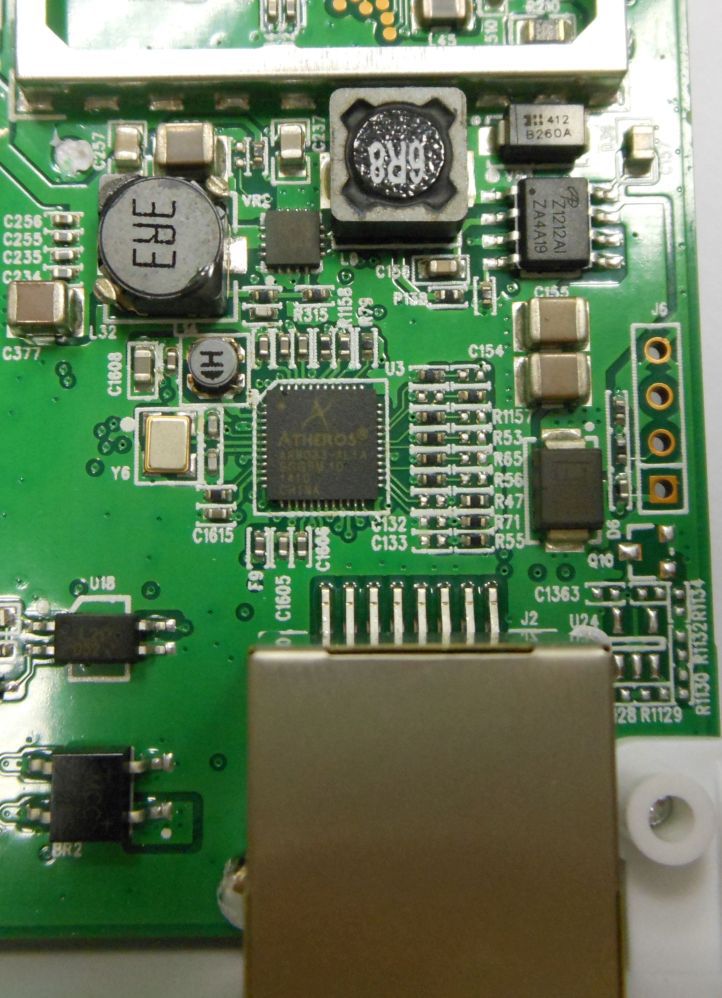

Screens removed

Radio path and signal processing chip

General Purpose CPU, RAM

Ethernet chip

Source: https://habr.com/ru/post/240599/
All Articles